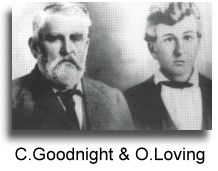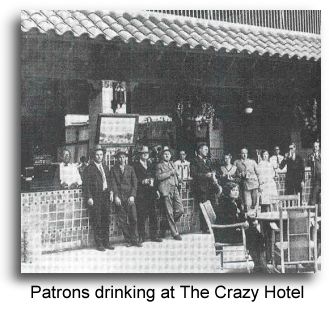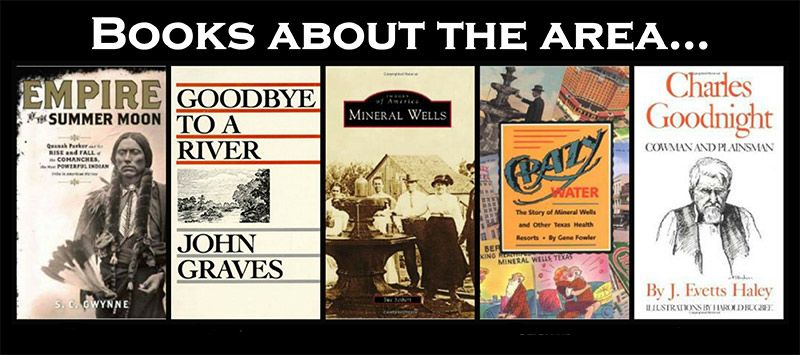The earliest evidence shows North Texas to be inhabited 12,000 years ago by hunter-gather peoples. At the end of the Ice Age about 6,000 years ago the climate warmed, and with it the landscape changed. Native American people in the area developed farming, pottery and domesticated dogs for use as beasts of burden. They planted pumpkin, squash, corn and beans in the spring and tended the crops throughout the summer. After the autumn harvests they lived a nomadic existence and followed the buffalo which they hunted.

In the late 16th century Spanish explorers met with the Lipan Apache who inhabited what is today the Palo Pinto County area. They introduced guns and horses to the Apache. In the late 17th century, French traders made their way from Louisiana into North Texas along the Red River, they were followed by American traders not too long after that. At about the same time, Comanche's were moving into the territory from the west and Wichita from the north. By the early 19th century Native Americans from East Texas had been forced into this area by the advancing frontier. These Indians along with immigrant tribes like the Delaware, Shawnee and Choctaw were removed to the Brazos Indian Reservation in 1854. More white settlers were moving into the area and mutual animosity escalated during the mid 1800's. This was heightened during the Civil War when the men left their farms unprotected to join the Confederate army. The few remaining settlers moved to forts and towns for safety. The Indian raids ended in 1874 when the Native Americans were beaten into submission.

After the Civil War and during the Reconstruction, times were hard for Texans, the economy was limping and Confederate money was worthless. During this time cattle roamed on the open range free for the taking. At this time they sold in Texas for two to three dollars a head. Charles Goodnight, Oliver Loving and several others rounded up 2,000 cattle and drove them to Colorado where they sold them for twenty to thirty dollars a piece. This was a shot in the arm for Texan economy. By 1869 the Transcontinental Railroad was completed and herdsmen drove cattle to Kansas to be transported to the northern states. These drives not only brought millions of dollars to Texas, but also served as viable markets without laws and shipping monopolies blocking the way. The railroad boom continued and the Texas and Pacific Railway had reached Fort Worth by 1878 and Weatherford by 1880.

The largest town in Palo Pinto County was born out of shear serendipity. As luck would have it, James Lynch and his family arrived in east Palo Pinto County from Denison. He dug a well in 1880 and found water with a strange taste. Before long it was found to have healing properties and as word spread about the Crazy Water, people flocked to the Lynch land. It was proclaimed the town of Mineral Wells and Mr. Lynch became its first mayor. Mineral Wells grew into a spa town and visitors from all over the nation came to sample its waters.

To accommodate the growing number of visitors a short railroad from Weatherford to Mineral Wells was built. In the early 1900's the town's population was 8,000 and every year it swelled to over 150,000 when the health seekers flocked to take the waters. Many hotels sprouted all over town to supply much needed accommodations. The Crazy Water Hotel and The Baker Hotel are the two most famous buildings from that era. Water and mainly crystals were shipped all over the world. The mineral water craze began to decline in the 1930's due to the Great Depression. People had less money and couldn't afford resort vacations, also the crystals were available throughout the country so the benefits were on hand. Then the FDA began to control medical advertising and place restrictions on the claims that crystal manufacturers could make, and that put an end to the crystal market.
In the 1940's most of the water companies had closed down and the economy of Mineral Wells became more reliant on the local military base, Camp Wolters.
Originally secured for Headquarters of all the mounted cavalry in Texas National Guard, Old Camp Wolters served a variety of designations from 1925 to 1946. Old Camp Wolters was summer training grounds for the National Guard until 1941. Barns were built for the horses. Tents housed the cavalrymen. Permanent buildings not erected until 1932-35 when the government sent CCC (Civilian Conservation Corps) workers to live on the land and build rock buildings. In 1941, Old Camp Wolters was activated as a US Army Infantry Replacement Center because of the war. This orginal property was expanded to 7,500 acres to include the site now known as Fort Wolters, or Wolters Industrial Complex. During World War II, this section of Old Camp Wolters was used as one of the POW sites for German soldiers captured in South Afrika from 1943-45. At war’s end, the POWs were returned home. Old Camp Wolters was deactivated. This section of Camp Wolters was returned to the National Guard for use. The entire camp was deactivated on August 19,1946. At this time, most buildings were moved, torn down, or used by businesses on site. This piece of property was maintained on a limited basis by the National Guard.
The camp went through changes when it was reactivated as Wolters Air Force Base in 1951 and in 1956 it was re-designated as Camp Wolters Army Base. In 1963 it was again renamed to Fort Wolters and became a permanent installation and home of Primary Helicopter Training during the Vietnam War. In 1973 the base was closed and over the next several years was turned into Wolters Industrial Park.
Modern day economy relies mainly on ranching, agriculture, oil and over fifty manufacturing businesses. The county's rich history and scenic drives still attract visitors. The highlights to see are: the Palo Pinto County Jail Museum, Strawn Museum, and the Little Rock Schoolhouse Museum in Mineral Wells. The Farm to Market Road (FM) 4 has been called the most scenic highway in Texas. Several historic homes have been renovated and turned into Bed and Breakfasts to serve the community as well as the tourist industry. The Famous Water Company is still in operation and selling Crazy Water and other products from the mineral waters.
Future plans include an amphitheater production based on the lives of cattlemen Charles Goodnight and Oliver Loving, and the construction of a Vietnam War Museum near Mineral Wells.

